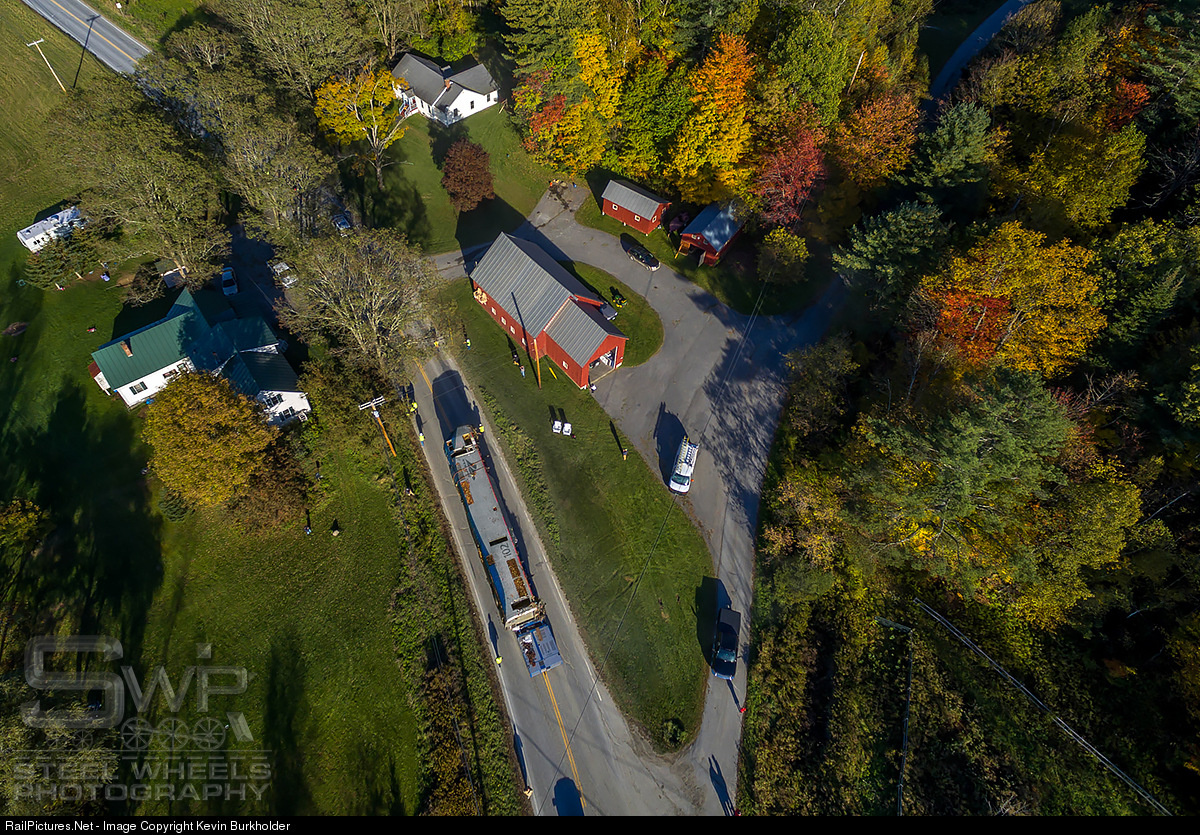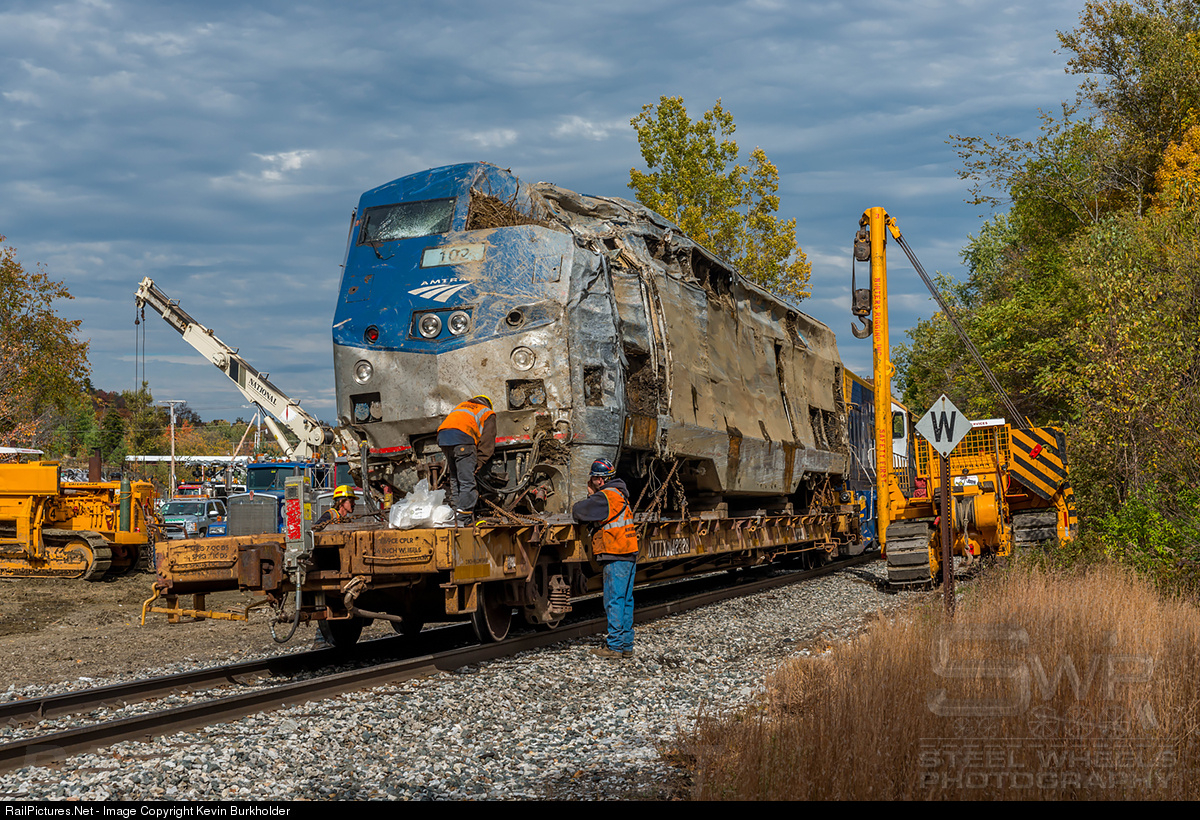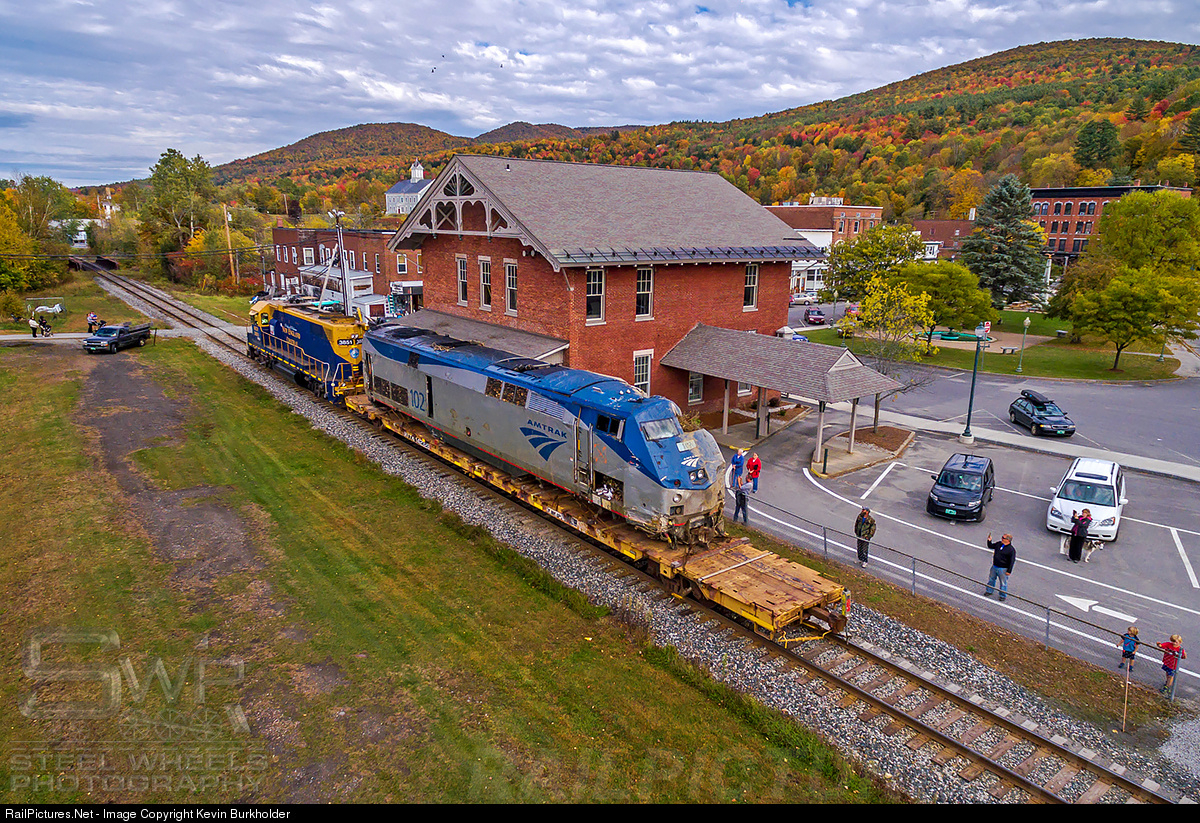Looks like Vermonter is only operating between Springfield and Washington, DC while they get this cleaned up. Too bad for anyone who was planning on traveling north of Springfield. I wonder how long the disruption will last. Any guesses?
Not long. That's NECR's mainline so they're going to want that scene cleaned up pronto, or else all their carloads going to/from Canada are going to have to be re-routed via Vermont Rail System out of Burlington, down to Rutland, and back to NECR at Bellows Falls...costing them an extra day on the deliveries. They've probably already re-railed and towed the rear 3 Amfleets that remained on the track off-scene and will be getting the one straddling the tracks off there tonight. NTSB is not going to be in "preserve the crime scene" mode after getting cursory look, because they need to be able to get heavy track equipment in there to secure the Amfleet that's hanging on the ledge and help stabilize the locomotive from above and below. Can't wait till nature takes its course and sends them the rest of the way down. Not when it was oversaturated ground on the adjacent embankment that caused the rock slide that caused the accident.
NECR will then come in the second they have the track clear and re-lay the broken section in a few hours' time. Then will start running its backed-up freight loads through at *very* restricted speed to clear the freight backlog while crews below take another couple days to figure out how to get that P42 down to the ground, upright, onto the flatbed truck, and down the driveway...without spilling any fuel. The trackbed itself was not compromised, so they'll be safe to run and will work on stabilizing the embankment later (it's supposed to be dry all week). They just may have to have inspectors do a drive-by on a hi-rail truck before every train to make sure the embankment is holding OK until they have the time to do a thorough job on it.
NECR most definitely gets first crack at running because they're the line owner and they're not so large that having to wait and re-route all their Canada-bound and Canada-originating carloads isn't taking its pound of flesh from them. I would guess we're not gonna see the Vermonter running until Thursday or probably Friday, since NECR would have to be given any uptime Wednesday to run a bunch of freight extras. It's a long weekend and foliage season is fast approaching peak; bigger-than-usual tix sales this weekend that they'll want to be able to honor. So no question this outage isn't going to last more than 2-3 days tops.
For the NTSB...pretty open-shut case. Act-of-nature freak accident. NECR would've already run through there once after sunrise, and the track was clear. The rockslide had to have happened as little as minutes to an hour prior, and no one would've seen/heard it since there are no abutters. The train never had a chance to slam brakes coming off that blind curve at high-50's MPH. There's no signal system here because total traffic is comfortably below the threshold for triggering the PTC mandate, but it wouldn't have made any difference because track circuits can only detect a break in the rail...not something piled on top of it. And there's only so many rockslide detectors one can deploy;
one unstable outcrop, sure...miles and miles of hillside that only acts up in 10-year rain events, impossible. The equipment performed superbly; every structural safety feature in the cars and loco exceeded all reasonable expectations for a crash of that severity, and if the front two cars and loco aren't too fucked up some of them might even be able to run again after the NTSB releases them and Amtrak can see if it's worth the effort to do an in-house rebuild.
The track's in rockslide-prone country that absorbs rainfall oversaturation poorly, and as EGE notes it was only a couple miles from the scene of a gruesome Montrealer accident far worse than this one that was likewise the sole work of Mother Nature. Mountainous terrain's gonna behave like mountainous terrain is wont to behave. The Central Vermont Railway has been running through this exact spot continuously since 1848 as New England's single longest north-south line...from the docks of Long Island Sound in New London to Cantic, Quebec. It obviously has taken a lot of punches through the centuries and absorbed it well to have lasted this long as a load-bearing trans-New England mainline.
Per reports there was a charter group riding this morning's train that had the rear business car reserved. That one was packed, and the other cars relatively empty as you'd expect for early on a Monday morning. Since they board rear-to-front at St. Albans to reserve as much space as possible for the Regional/Shuttle crowds that start getting on in Springfield--and keep the front car totally closed off until Springfield--nearly every passenger was in the cars that stayed on the tracks. There's only small chance that more than single digits were in the car that went sideways...possibly none at all. And definitely nobody in the front car that went over the ledge. Probably would've been a loss-of-life accident if the boarding procedure in that part of VT was anything other than back-to-front.
The crew?...well they were the real lucky duckies today. Especially the engineer in that loco who owes his or her life--and well-deserved hazard pay--to all the tree branches that broke that thing's fall on the way down.
Strong branches, and lots of them; a GE Genesis weighs 268,000 lbs. and got stopped cold in a vertical fall without ever touching the ground.




